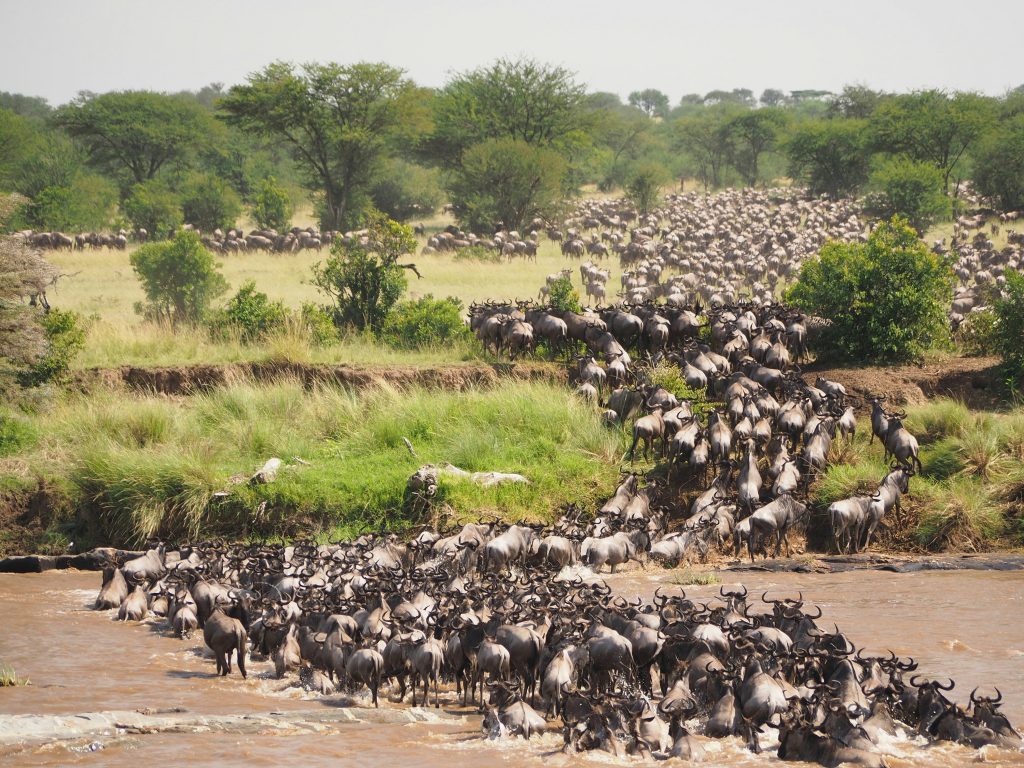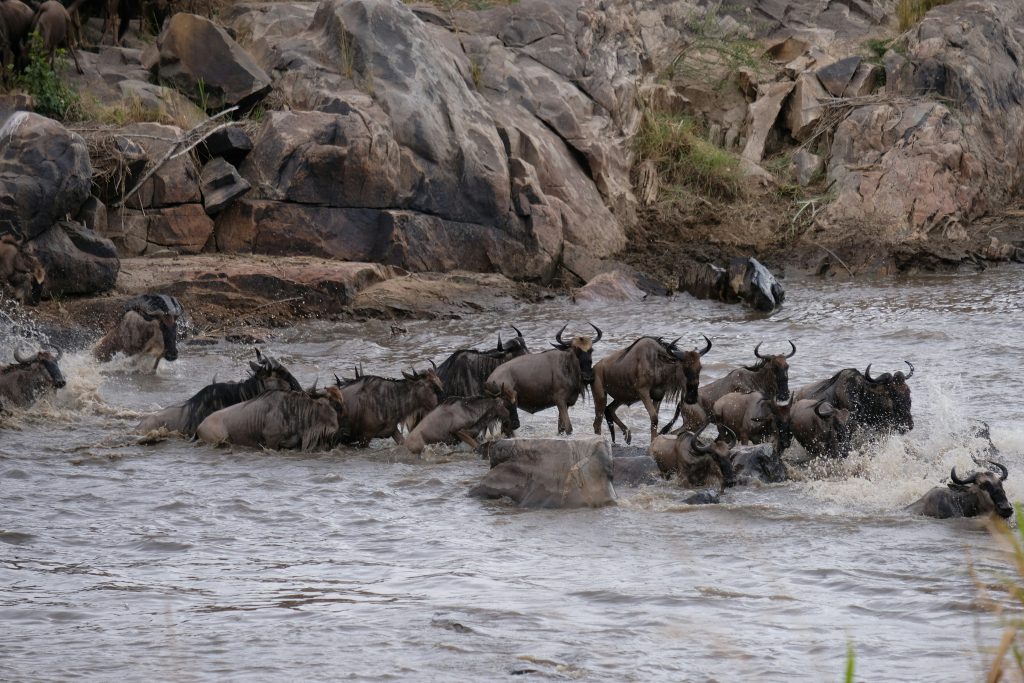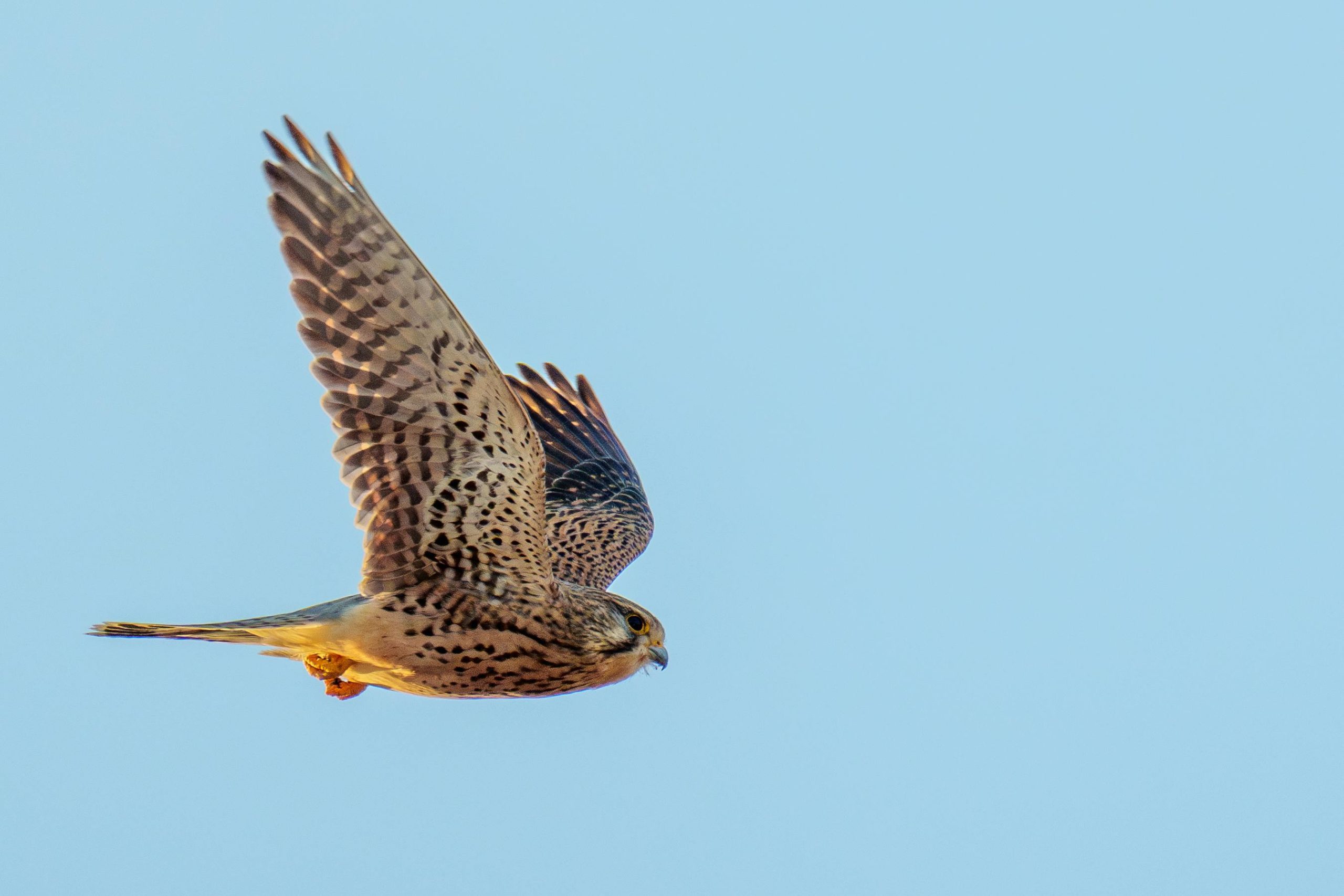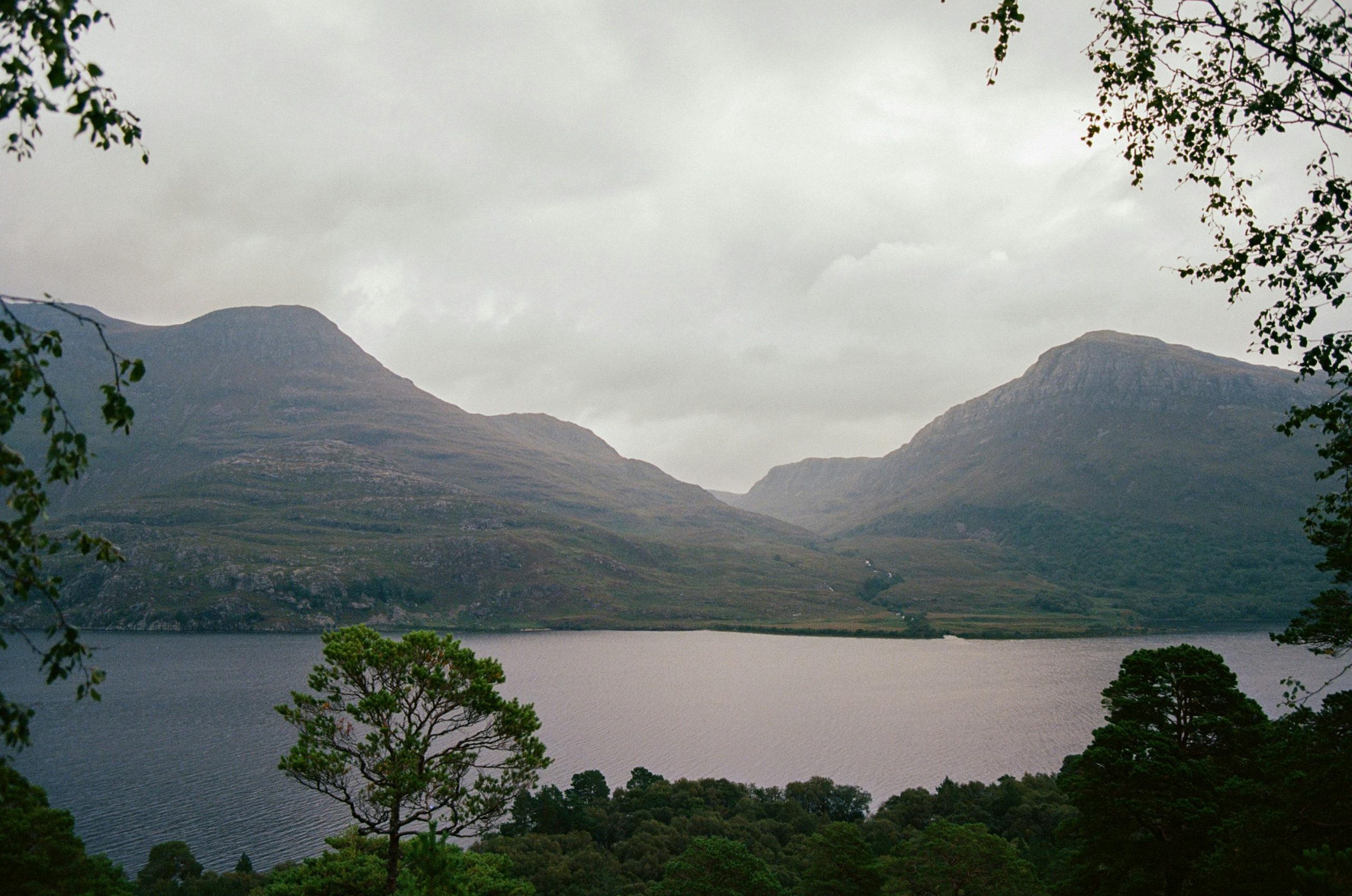the Great Wildebeest Migration:
An Epic African Safari
Every year, over a million wildebeest embark on a treacherous journey across the vast Serengeti-Mara ecosystem in Tanzania and Kenya. The Great Migration is a breathtaking journey many dream of seeing in person. It’s truly a once-in-a-lifetime experience.

Understanding the Wildebeest Migration Route
The wildebeest migration is a continuous cyclical journey, driven by the ever-changing availability of water and fresh grazing grounds. These animals travel over 1,800 miles across Tanzania’s Serengeti and Kenya’s Maasai Mara.
The migration begins in southern Serengeti around January. As thousands of wildebeest give birth during the calving season — a breathtaking sight.
As the rains fade and grass thins out, the wildebeest move north in search of fresh greenery. Their journey leads them across dangerous rivers, where they face strong currents and the constant threat of crocodiles.

The Great Migration: A Life-or-Death Journey
The wildebeest migration is more than a scenic journey. It’s a life-or-death trek that highlights nature’s raw power and the fight for survival. Along the way, the wildebeest face numerous dangers and obstacles that test their endurance and resilience.
One of the most iconic and heart-wrenching events of the migration is the river crossings. As the herds approach the swollen rivers, a palpable tension builds, and the wildebeest hesitate, sensing the danger that lies ahead. Eventually, the sheer weight of the massive herd pushes the first brave individuals into the water, and the rest follow in a frenzied stampede.
The river crossings are a true spectacle of nature’s drama, with wildebeest struggling against the powerful currents, while crocodiles and other predators lie in wait, ready to claim their share of the bounty. The sheer chaos and intensity of these crossings are both awe-inspiring and heart-wrenching, leaving spectators on the edge of their seats.
Beyond the river crossings, the wildebeest must also contend with other formidable obstacles, such as steep ravines, rugged terrain, and the ever-present threat of predators like lions, hyenas, and cheetahs. These skilled hunters take advantage of the vulnerability of the wildebeest during their journey, picking off the weak, the young, and the stragglers in a never-ending cycle of life and death.
When to Witness the Wildebeest Migration
Timing is crucial when it comes to witnessing the wildebeest migration in all its glory. The migration is a year-round event, but certain periods offer more spectacular sights than others.
The Calving Season (January – March)
The calving season, which typically occurs between late January and early March, is an extraordinary time to witness the wildebeest migration. During this period, hundreds of thousands of wildebeest congregate in the southern plains of the Serengeti to give birth to their calves. The sight of newborn calves taking their first wobbly steps amidst the vast herds is a truly heartwarming and unforgettable experience.
The River Crossings (June – July)
One of the most dramatic and highly anticipated events of the migration is the river crossings, which typically occur between June and July. During this time, the wildebeest herds must navigate the treacherous waters of the Mara River, braving powerful currents and the ever-present threat of crocodile attacks. The sheer intensity and chaos of these crossings make for an adrenaline-pumping and unforgettable experience.
The Northward Trek (August – October)
As the dry season sets in, the wildebeest begin their northward journey towards the lush grazing grounds of the Maasai Mara National Reserve in Kenya. This period, from August to October, offers ample opportunities to witness the massive herds on the move, grazing in the open plains and interacting with other iconic African wildlife species.
Planning Your Wildebeest Migration Safari
Witnessing the wildebeest migration is a bucket list experience for many, but it requires careful planning and preparation. Here are some tips to help you make the most of your wildebeest migration safari:
- Choose the Right Time: Decide on the specific event or phase of the migration you wish to witness, and plan your trip accordingly. Keep in mind that the migration is a fluid event, and the timing can vary from year to year.
- Book Early: Popular safari camps and lodges in the Serengeti and Maasai Mara can fill up quickly, especially during peak migration periods. Use our Tailored Safari package and Book well in advance to secure your spot.
- Hire a Knowledgeable Guide: Our skill and experience safari guide can make all the difference in your migration experience. We will not only help you navigate the best viewing spots but also provide invaluable insights into the behavior and dynamics of the wildebeest herds.
- Pack Appropriately: The Serengeti and Maasai Mara can be hot and dusty during the dry season, and the terrain can be rugged. Pack lightweight, breathable clothing, sturdy hiking shoes, and plenty of sunscreen and insect repellent.
- Be Prepared for Long Days: Witnessing the wildebeest migration often involves long hours in a safari vehicle, navigating rough terrain and waiting patiently for the herds to move or for river crossings to occur. Be prepared for long days and early starts to make the most of this Wonder of the Natural World.
- Respect the Environment: The wildebeest migration is a fragile and delicate ecosystem. Follow all guidelines and regulations set by the national parks and your safari operators to minimize your impact on the environment and the wildlife.
Conservation and the Future of the Migration
The Great Wildebeest Migration isn’t just an amazing sight — it’s a key part of keeping the Serengeti-Mara ecosystem alive and healthy. Every year, over a million wildebeests move across the plains, supporting a wide variety of animals, from lions and hyenas to birds and insects.
But this natural wonder is under threat. Habitat loss, poaching, and climate change are putting pressure on the migration routes. As nearby human populations grow, the wildebeests’ grazing lands and paths are shrinking, causing more conflict and damage to the ecosystem.
Thankfully, organizations like the Frankfurt Zoological Society, the Serengeti Wildlife Research Institute, and Tanzania’s National Parks Authority are working hard to protect the migration. They run anti-poaching patrols, educate local communities, and help create safe corridors for the animals to travel.
Still, they can’t do it alone. Protecting the wildebeest migration depends on support from people like you — travelers, nature lovers, and anyone who cares about our planet.
When you book your safari with eco-friendly tour operators and respect the wildlife, you’re helping preserve this incredible event.
Your trip becomes more than just a once-in-a-lifetime adventure — it becomes part of the effort to keep the wildebeest migration alive for future generations.



